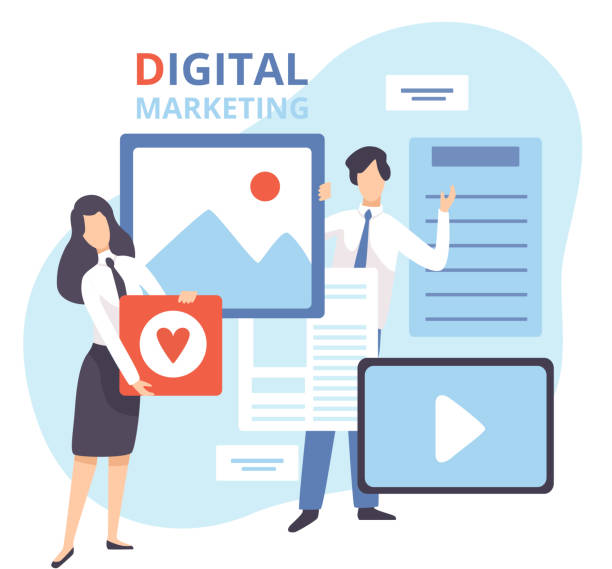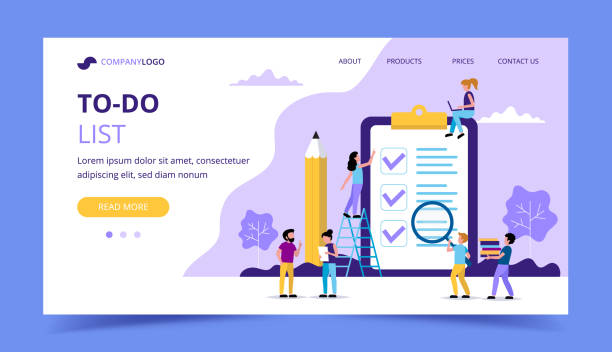Introduction to Fast Website Design and Its Necessity
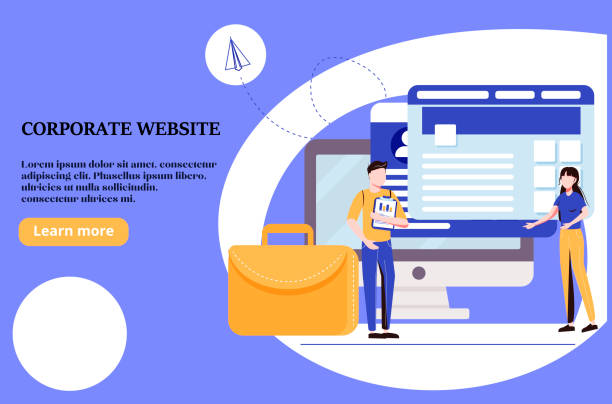
In today’s digital world, website loading speed is not just a competitive advantage, but a vital necessity. The concept of #Fast Website Design goes beyond merely reducing user waiting time; it directly impacts user experience, conversion rates, and even your ranking in search engines. A slow website frustrates users and causes them to quickly leave your site, a phenomenon known as high bounce rate. According to statistical data, every second of delay in page loading can lead to a 7% decrease in conversion rates and a 16% drop in customer satisfaction. This demonstrates how speed optimization is a strategic investment for any online business. Tools like Google PageSpeed Insights allow us to evaluate our site’s performance and identify its weaknesses. A deep understanding of factors affecting website speed and implementing effective solutions for fast website design can make a significant difference in your online success. This section, as an explanatory and analytical introduction, clarifies the importance of this topic for you. We will continue by delving into more specialized aspects of fast website design and providing practical solutions so you can have a website with unparalleled performance.
Are you disappointed with your online store’s low conversion rate?
Rasaweb, with professional e-commerce website design, is your definitive solution!
✅ Increase your sales and revenue
✅ Unparalleled user experience for your customers
⚡ Get a free consultation now!
Why Site Speed is Crucial for SEO and User Experience
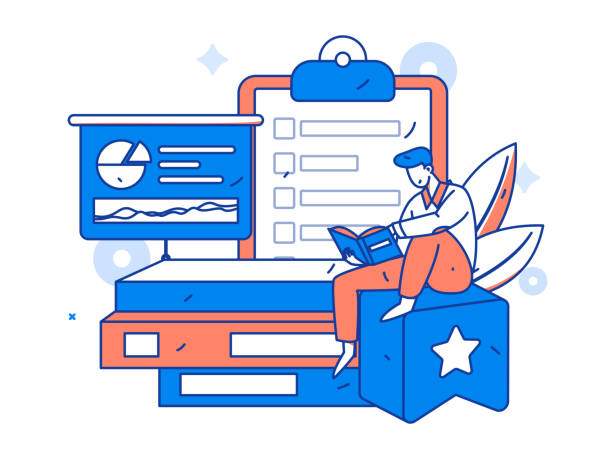
Site speed is no longer just a desirable feature; it’s a critical factor for success in the digital realm. From the perspective of Search Engine Optimization (SEO), Google and other search engines consider page loading speed a significant ranking factor. Websites that load faster offer a better user experience, leading to a reduced bounce rate, increased user time on site, and ultimately, positive signals to search engines. This positive cycle improves your site’s ranking in search results and attracts more organic traffic. A fast website design means your users wait less, access the information they need more easily, and are more likely to convert into customers or perform your desired actions. On the other hand, user experience (UX) is directly tied to site speed. In today’s world, users expect websites to load in a fraction of a second, and no one wants to wait to see content. Studies show that over half of users abandon websites that take more than 3 seconds to load. This statistic is alarming and further highlights the importance of speed optimization. The educational and analytical content of this section helps you understand why fast website design is an undeniable factor for any SEO and user experience strategy. By understanding these points, you can focus on improving your website’s performance and benefit from it in attracting and retaining users.
Key Factors Affecting Website Speed and Solutions
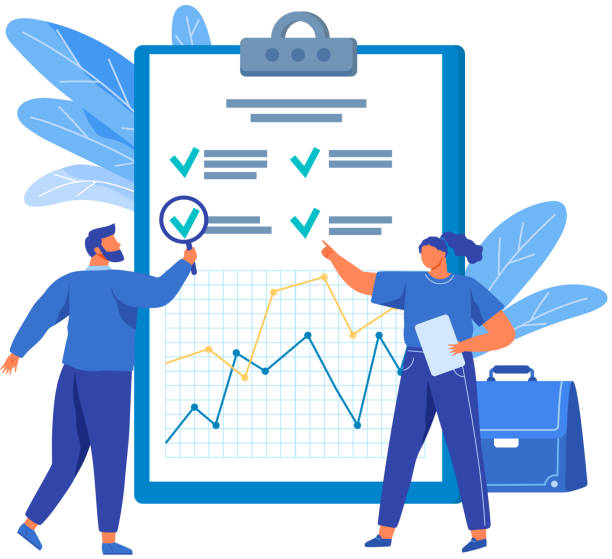
To achieve fast website design, it’s essential to understand the factors affecting website speed. These factors range from the nature of codes and scripts to hosting quality and image optimization. One of the most important factors is the size and number of HTTP requests. The more CSS, JavaScript files, images, and fonts there are, the more requests the browser has to send to the server, and this process will be time-consuming. File compression (like Gzip), reducing image sizes without losing quality, and using a CDN (Content Delivery Network) are solutions that significantly help improve speed. Another factor is inefficient coding and excessive use of heavy plugins and scripts. Many websites, especially those built with Content Management Systems (CMS) like WordPress, suffer from this problem. Database optimization, removing unnecessary plugins, and merging CSS and JS files are among the specialized measures in this regard. Also, choosing the right host and correct server settings play a significant role in fast website design. Using SSD hosts, servers with sufficient resources, and appropriate server cache settings can drastically reduce server response time (Time To First Byte – TTFB). Below is a specialized and explanatory table of common factors and their solutions:
| Influential Factor | Problem Description | Optimization Solution |
|---|---|---|
| High-volume Images | Large and unoptimized images increase loading time. | Image compression (WebP), lazy loading, CDN usage |
| Large CSS and JS Files | Extra and uncompressed codes slow down site performance. | Minifying codes, merging files, removing unused codes |
| Multiple Web Fonts | Using too many fonts and inefficient loading. | Font compression (WOFF2), preloading essential fonts, limiting the number of fonts |
| Lack of Caching | The browser is forced to reload all resources on every visit. | Enabling browser caching, using server-side caching |
| Slow Server Response | The server takes a long time to process requests. | Choosing a suitable host, database optimization, CDN usage |
By observing these points and implementing the provided solutions, you can take effective steps towards fast website design and optimizing its performance. Each of these factors has great potential for speed improvement.
Speed Measurement Tools and How to Use Them
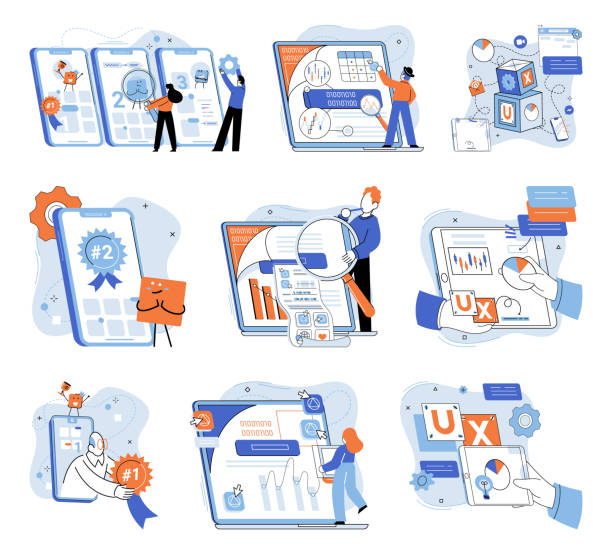
To achieve a fast website design, the first step is to identify the current status and weaknesses of the website. This is done through speed measurement tools. Fortunately, powerful tools are available for free that provide comprehensive and accurate information about website performance. Google PageSpeed Insights is one of the most popular and complete of these tools, providing both performance scores for mobile and desktop and specific optimization suggestions. This tool is especially important for SEO, as it directly uses Google’s data. GTmetrix is another tool that, by providing two important metrics, PageSpeed and YSlow, as well as displaying a Waterfall Chart of resource loading, helps you see exactly which resources are slowing down your site. This guidance tool is excellent for developers. WebPageTest is also a very advanced tool that allows testing from various geographical locations, different browsers, and with different connection speeds. This tool is very useful for specialized and deeper analyses. To effectively use these tools, first enter your website address and wait for the results. Then look at the suggestions section. These suggestions usually include items such as image compression, caching activation, removal of render-blocking resources, and CSS and JavaScript optimization. Each tool may have different recommendations, but the basic principles of fast website design are the same for all of them. By following and implementing these suggestions, you can continuously improve your site’s speed and ensure that your website always provides a smooth and fast user experience. This educational and guidance section provides practical steps for you.
Do you have an e-commerce site, but your sales aren’t as expected? Rasaweb, with professional e-commerce website design, solves your problem forever!
✅ Significant increase in conversion rates and sales
✅ Unparalleled user experience for your customers
⚡ Click here for a free consultation with Rasaweb!
Server-Side Optimization Techniques and the Role of Caching
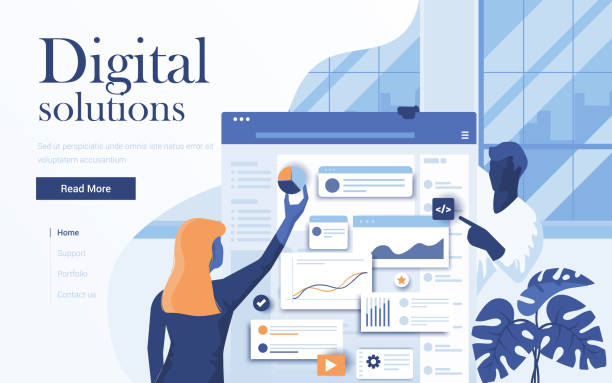
Website speed is not limited to front-end codes and site appearance; server performance and how it responds to requests play a fundamental role in fast website design. Server-side optimization includes a set of techniques aimed at reducing request processing time and sending information faster to the user’s browser. One of the most important of these techniques is enabling Gzip compression. Gzip reduces the size of HTML, CSS, and JavaScript files before sending them to the browser, which significantly helps loading speed. This feature can be enabled in server settings (like Apache or Nginx). Another is database optimization. Large and unorganized databases can slow down the server. Removing redundant data, optimizing tables, and using indexes can dramatically increase data retrieval speed. For CMS-based websites like WordPress, there are specific plugins for database optimization. But perhaps the most important server-side technique is Caching. Caching means storing a copy of static website content (like HTML, CSS, and images) or database query results in the server’s or user’s browser’s temporary memory. When a user visits your site for the second time, instead of reloading all resources from the server, the cached version is used, which helps to achieve faster website design. Caching can be implemented at various levels: Browser Caching, Server-Side Caching (like Varnish or Redis), and CMS Caching (like WP Super Cache for WordPress). Proper implementation of these techniques drastically reduces server response time (TTFB) and provides a smoother user experience for your visitors. This specialized and guidance section emphasizes the importance of server infrastructure optimization in achieving fast website design.
Front-end Optimization Including Images, CSS, and JavaScript
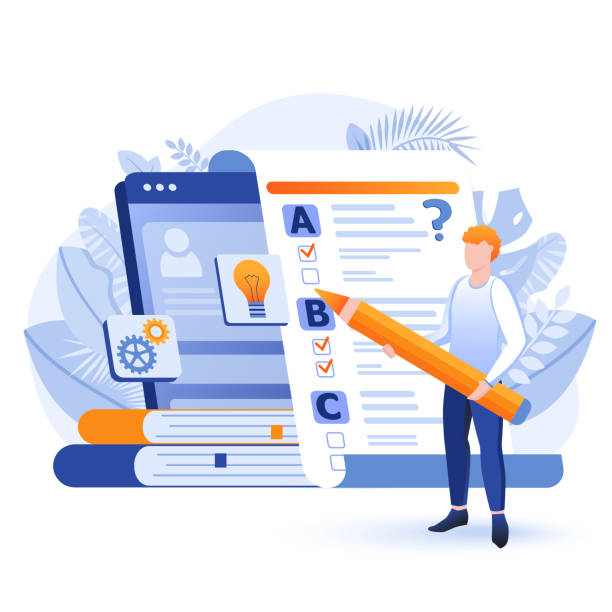
After server-side optimization, it’s time for front-end optimization, which is directly related to user experience and fast website design. This stage involves optimizing files that the user’s browser must download and process: images, CSS, and JavaScript. Image optimization is one of the most effective measures. High-volume images can occupy a large portion of page loading time. To solve this problem, you should convert images to modern formats like WebP, which offer high quality with smaller file sizes. Also, using image compression tools without significant quality loss, specifying correct image dimensions (using width and height attributes in HTML), and implementing lazy loading (loading images only when they become visible to the user) are highly important. Regarding CSS and JavaScript, the main challenge is their size and loading method. To increase speed, you should minify these files, meaning removing all white spaces, comments, and extra characters from the codes to reduce file size. Merging multiple CSS and JS files into one (if possible) can also reduce the number of HTTP requests. Another point is removing unused CSS and JS codes and deferring or asynchronously loading JavaScript files to prevent render-blocking. As a specialized tip, always try to place essential CSS for the first page display inline within the head tag and load the rest of the CSS separately and asynchronously. These measures allow the browser to display the main content of the page faster. Implementing these front-end techniques helps you achieve a fast and responsive website design that provides an enjoyable user experience.
The Role of Content Management Systems and Hosting in Site Speed

The correct choice of Content Management System (CMS) and hosting service provider are two critical decisions that directly impact fast website design and your website’s overall performance. Many websites are built with popular CMSs like WordPress, Joomla, or Drupal. Although these platforms offer numerous features, they can slow down the site due to large code volumes, multiple plugins, and heavy themes. Choosing a light and optimized theme, using a minimum of essential plugins, and regularly updating the CMS and plugins are important measures to maintain speed on these platforms. On the other hand, hosting is the backbone of your site’s performance. Even if your site is optimized in the best possible way, inappropriate hosting can nullify all your efforts. Factors such as host type (shared, VPS, dedicated, cloud), server resources (CPU, RAM), hard disk type (HDD or SSD) and server location (proximity to your audience) all affect loading speed. SSD hosts offer better performance than HDDs due to their very high read and write speeds. Also, choosing a host whose servers are located close to your main audience can reduce latency and contribute to faster website design. The analytical and news content of this section helps you make more informed decisions about these two important factors. Below is a comparative table between different hosting types and their impact on speed:
| Hosting Type | Advantages | Disadvantages | Speed Recommendation |
|---|---|---|---|
| Shared Hosting | Cheap, easy setup | Shared resources, variable speed, lack of control | Only for low-traffic sites |
| Virtual Private Server (VPS) | More dedicated resources, more control, medium price | Requires more technical knowledge, may be more expensive | Suitable for most medium-sized sites |
| Dedicated Server | Fully dedicated resources, full control, highest speed | Very expensive, requires high technical knowledge | For high-traffic and large sites |
| Cloud Hosting | High scalability, pay-as-you-go, high stability | More complex, may be costly | Excellent option for fast website design with variable traffic |
By considering these factors, you can make an informed choice for your CMS and hosting that ensures fast website design and optimal performance for your website. These choices lay the foundation for a powerful and fast website.
Common Web Design Mistakes That Slow Down Site Speed
![]()
On the path to achieving a fast website design, there are some common mistakes that can severely harm your website’s speed. Recognizing these errors and avoiding them is as important as implementing optimization techniques. One of the biggest mistakes is not optimizing images. Many web designers upload high-volume images directly from cameras or graphic software without any compression. This can increase page size by several megabytes and drastically increase loading time. Another common mistake is the excessive use of plugins and scripts. Every extra plugin or script means more codes and HTTP requests, which can slow down the site, especially if these plugins are not properly coded or cause conflicts. Sometimes a single plugin can significantly reduce site speed. Also, not using caching or incorrect caching settings is another important mistake. Without caching, the server is forced to reload all content from scratch on every visit, even if the content hasn’t changed. This is particularly harmful for high-traffic websites. Ignoring site responsiveness and loading unnecessary resources for mobile devices can also disrupt the mobile user experience and cause slowdowns. The thought-provoking content of this section makes you wonder if you have also committed these mistakes. Do you use too many plugins on your website? Are you sure your images are properly optimized? Have you ever checked your site’s PageSpeed Insights scores? By honestly answering these questions, you can identify potential weaknesses in your fast website design and take necessary actions to correct them. Understanding and avoiding these mistakes is a big step towards building a high-performing website.
Are you dissatisfied with the low conversion rate of visitors to customers on your e-commerce site?
With professional e-commerce website design by Rasaweb, solve this problem forever!
✅ Increase visitor-to-customer conversion rate significantly
✅ Create an excellent user experience and build customer trust
⚡ Get a free consultation
The Future of Web Performance and User Expectations

The world of the web is constantly evolving, and with technological advancements, user expectations for website speed and performance are also increasingly rising. Therefore, fast website design is not just a current trend, but a forward-looking necessity. In the near future, it can be expected that web speed standards will surpass what we witness today. Technologies like AMP (Accelerated Mobile Pages) and PWA (Progressive Web Apps), which contribute to instantaneous loading speed and app-like user experience, will become more prevalent. Also, with the expansion of 5G and improved internet infrastructures, users will expect websites to load almost immediately, without any delay. The news content of this section tells you that Google continuously updates its algorithms to prioritize faster and more responsive websites, and this trend will continue in the future. This indicates that investing in fast website design is a long-term and smart decision. The development of artificial intelligence and machine learning can also help automate website optimization in the future, but the human role in understanding user needs and implementing creative solutions will remain vital. From a fun and analytical perspective, imagine a website where there’s no need to wait for photos or videos to load; a flawless user experience that allows you to immerse yourself in the content without interruption. This is a future that can be achieved by focusing on web performance optimization. Developers and business owners must always seek the latest techniques and technologies to keep pace with changing user expectations and remain leaders in the digital competition. Speed will be the key to this progress.
Case Study of Successful Fast Website Design Projects

To better understand how to achieve fast website design, studying successful projects can be very instructive. Many large companies and successful platforms have invested heavily in optimizing their website speed and have achieved amazing results. For example, Amazon, the e-commerce giant, has long been aware of the importance of loading speed. According to their reports, every 100 milliseconds reduction in page load time can lead to a 1% increase in their sales. They have achieved unparalleled loading speeds by optimizing images, advanced caching, extensive CDN usage, and distributed server architecture. Fiverr, the global freelancing platform, is also an excellent example of fast website design. Despite the high volume of images and dynamic content, they have managed to provide a fast user experience for millions of their users by using lazy loading techniques, advanced compression and front-end code optimization. Or Flipkart, one of India’s largest online stores, which saw a significant increase in conversion rates and user engagement by improving its mobile site loading speed. This company achieved remarkable results by focusing on Core Web Vitals and optimizing key user experience elements. This case study is not only educational content but also shows that fast website design is not just a theoretical idea, but a practical and proven strategy that directly impacts business success. Valuable lessons can be learned from these examples: speed is an ongoing process and requires continuous attention. Also, investing in speed optimization technologies and specialists will yield high returns. These examples are clear evidence of the fact that speed is the king of the digital world.
Frequently Asked Questions
| Question | Answer |
|---|---|
| What is fast website design? | A process for building a website that loads at high speed and provides a smooth and optimized user experience. |
| Why is site speed important? | Increased user satisfaction, improved search engine ranking (SEO), reduced bounce rate, and increased conversion rate. |
| What factors affect site speed? | Page size, number of HTTP requests, image optimization, JavaScript and CSS codes, server speed, and caching. |
| How can site speed be measured? | Using tools like Google PageSpeed Insights, GTmetrix, Pingdom Tools. |
| How can site speed be increased? | Optimizing images, compressing files (CSS, JS, HTML), browser caching, reducing redirects, choosing a suitable host. |
| Does fast website design mean low quality? | No, fast design means designing with a focus on speed and efficiency optimization, not reducing the quality of design or content. |
| What is the role of hosting in site speed? | The speed and quality of the hosting server directly impact the site’s response time and thus the loading speed. |
| How can images be optimized for speed? | Using appropriate formats (like WebP), compressing images without significant quality loss, specifying definite dimensions for images. |
| Can complex websites also be fast? | Yes, with appropriate architecture, code optimization, and resource management, even complex websites can have high speed. |
| Is fast website design the same as Agile development? | No, fast website design focuses on the final outcome (a fast website), while Agile development is a methodology for project management and software development. |
And other services of Rasaweb Advertising Agency in the field of advertising:
Smart Digital Branding: An effective tool to increase website traffic using real data.
Smart Website Development: A specialized service for click-through rate growth based on marketing automation.
Smart SEO: An effective tool for campaign management with the help of Google Ads management.
Smart Google Ads: A professional solution for improving SEO ranking with a focus on optimizing key pages.
Smart Advertising Campaign: A combination of creativity and technology to attract customers through intelligent data analysis.
And over hundreds of other services in the field of internet advertising, advertising consulting, and organizational solutions.
Internet Advertising | Advertising Strategy | Advertorial
Sources
Website Speed Optimization MethodsWhy is Site Speed Important?Modern Web Design TechniquesFactors Affecting Site Speed
? Are you ready to transform your business in the digital world? Rasaweb Afarin Digital Marketing Agency, by providing comprehensive services including professional e-commerce website design, Search Engine Optimization (SEO), and advertising campaign management, is your partner on the path to achieving online success. Contact us today and secure the digital future of your business.
📍 Tehran, Mirdamad Street, next to Bank Markazi, Kazeroon Jonubi Alley, Ramin Alley, No. 6



